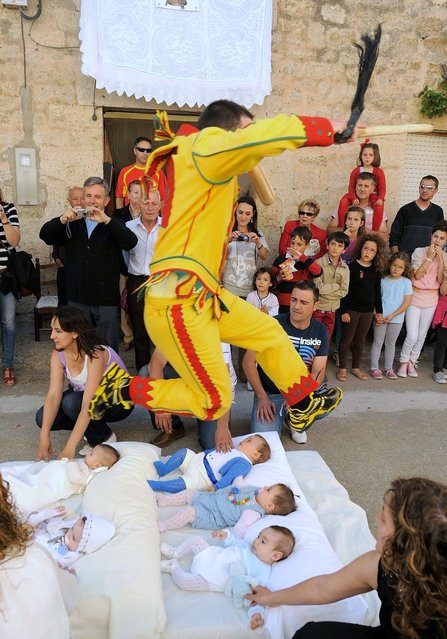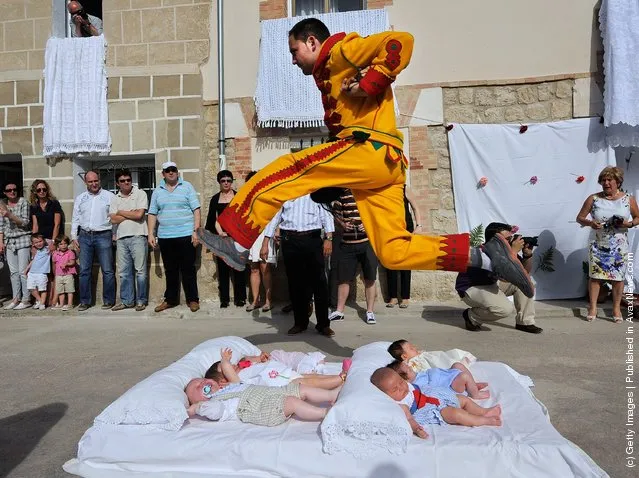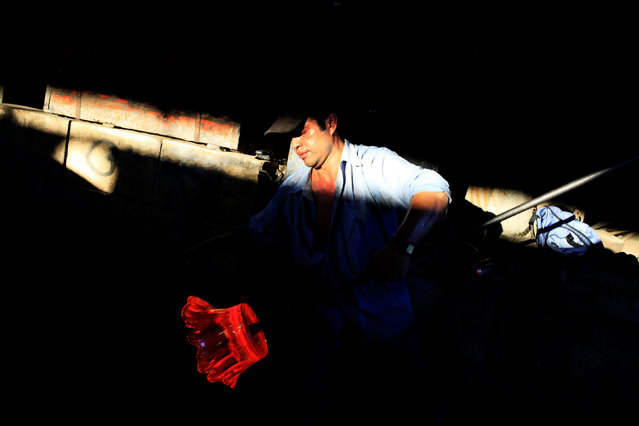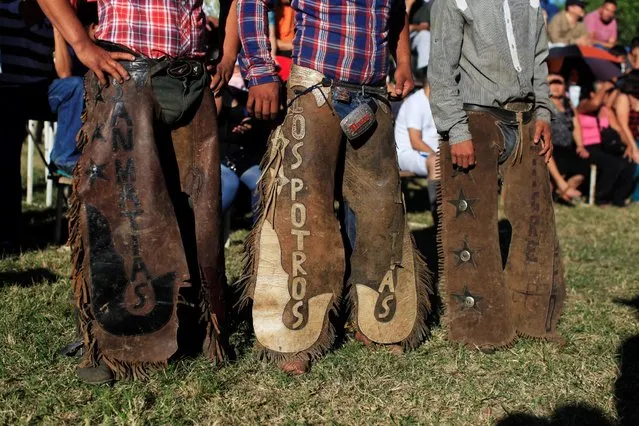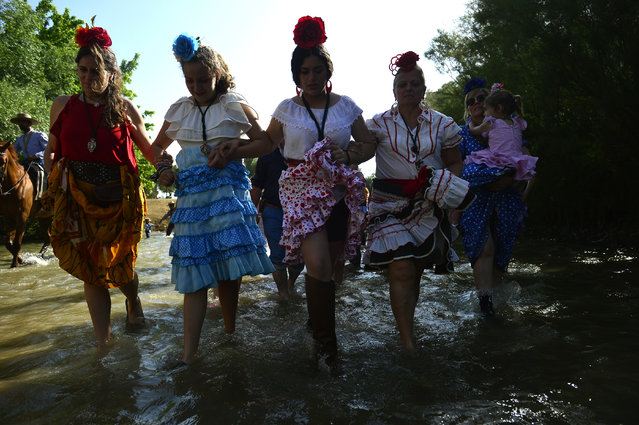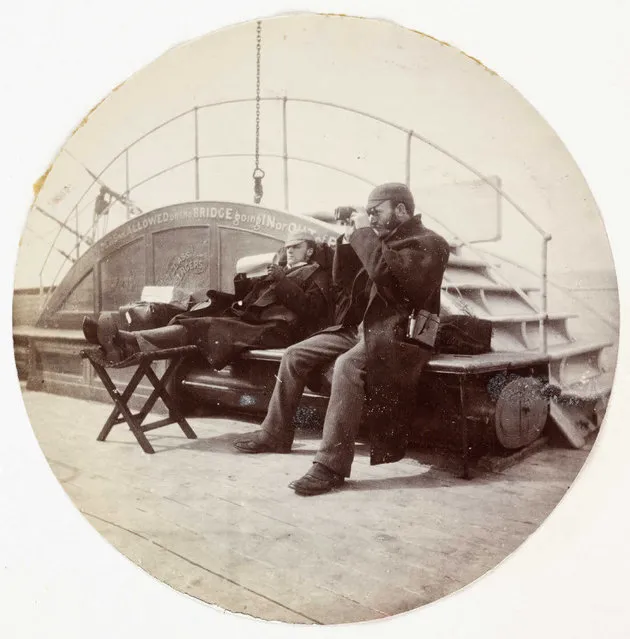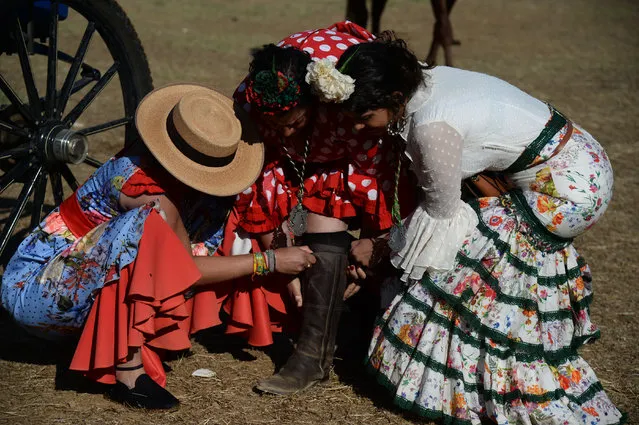
Pilgrims rest on June 6, 2019 in Villamanrique, during a pilgrimage to the village of El Rocio. El Rocio pilgrimage, the largest in Spain, gathers hundreds of thousands of devotees in traditional outfits converging in a burst of colour as they make their way on horseback and on board decorated carriages across the Andalusian countryside. (Photo by Cristina Quicler/AFP Photo)
08 Jun 2019 00:03:00,post received
0 comments


